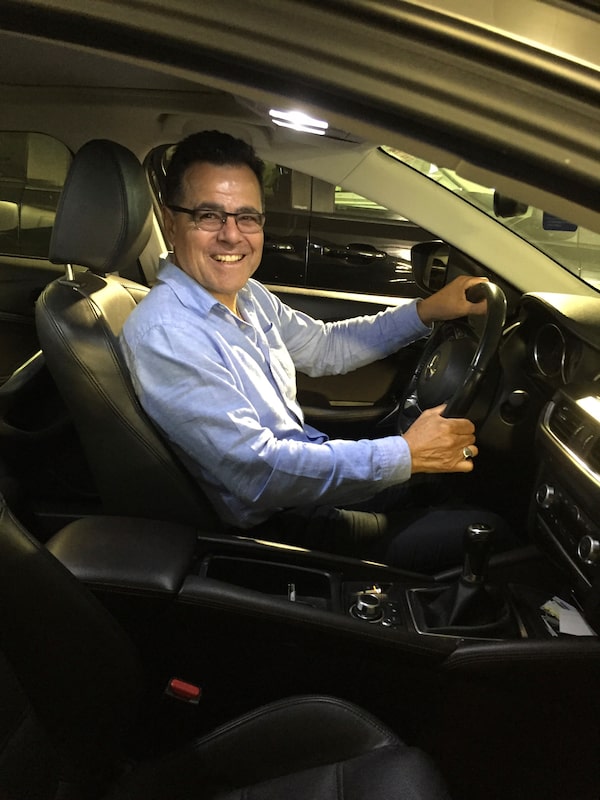
In Italy, if you are renting a car and want to drive automatic you are going to pay a lot more.Andy Clark/The Globe and Mail
Like many folks who know how to use a dial telephone, I grew up driving stick. I learned to drive on a standard transmission Volvo and then a standard transmission VW Rabbit. Though I did take my driving exam in an automatic provided by the school (just to make it easier), I spent the first 20 years of my driving life shifting gears manually. In the 1980s, automatic transmissions were not as ubiquitous as they have now become.
I gave in to the trend at the turn of the century. That’s when I inherited a Dodge Spirit (automatic) and subsequently bought a series of minivans (automatic). I discovered automatic transmission’s sluggish charm, its effortless appeal – press gas to go, press brake to stop. No more skill required to start on a hill. Automatic transmission is so simple you could train a donkey to do it (most intelligent dogs would find it too boring). Driving automatic is a fitting metaphor for modern life: it’s a simple, joyless exercise that anyone can do and nobody really enjoys.
Oh yeah, life goes on, long after the thrill of driving has gone.
An opportunity to reconnect to my roots presented itself when I decided to rent a car and do some driving in Italy. People still drive stick in Italy. If you are renting a car and want to drive automatic you are going to pay a lot more. So, I booked myself a standard transmission Ford Focus.
My next move was contacting Carlos Tomas, the owner of Shifters. Founded in 1987, Shifters was the first driving school in Canada devoted exclusively to learning how to drive manual transmission. Tomas, 63, has worked as a driving instructor most of his adult life. He’s the stick shift guru. His clients run the gamut from folks who are about to buy sports cars and people who will be driving standard while on vacation to those who need the qualification for employment. He says the quickest studies are musicians – specifically drummers (“They have the rhythm”) and pianists (“If they play a piano with three pedals”). It normally takes someone with no experience around five 90-minute lessons to get to the point where they’re ready to hit the road.

Carlos Tomas, owner of Shifters, a driving school devoted exclusively to learning how to drive manual transmission.Andy Clark/The Globe and Mail
We begin the lesson with a rental car ritual. Carlos explains that before turning on the ignition, it’s best to get the mirrors and seat position right, locate the emergency brake, and then check the gears. Try shifting them. Then close your eyes and run them. “You don’t want to be second-guessing yourself at 50 km/h. Wondering, ‘Am I in third or fifth?’ ”
When we’re on the road, the pleasure that comes from driving standard all comes back. All I can think is: “Oh, yeah this is what driving is like.” It’s like a sleepwalker suddenly waking up. But so do a few bad habits. Perhaps the most glaring is a tendency to ride the clutch when accelerating. It’s a hangover from driving automatic. “You have to keep in mind that it is the clutch that puts the car in gear and that is what propels it forward,” he says. “It’s not the gas. However, you need to rev the engine before releasing the clutch to the friction point to ensure there is sufficient torque for the job, otherwise the engine will lug or stall as soon as the clutch begins to bite. He reminds me that once the clutch is fully engaged (pedal released), then the right foot controls speed – “but below 6 km/h (in many vehicles) the left foot is in charge.”
Carlos then gets me on a slight hill and we practice coming out of a dead stop on an incline. We find the sweet spot between the gas and the clutch and practise rolling forward as I release the emergency brake. Then we practise using the clutch to inch forward ever so slowly, the way one would in slow traffic or if inching forward to check to see if the way is clear.
When it’s all over, I get a passing grade. “You’ll do well over there,” he says. I hope he’s right.
Carlos’s Tips for Driving Stick on Vacation
1. Be prepared to rev the engine higher.
Many European rentals have very small engines and in order to handle the extra loads, passengers and luggage, you may need to rev these engines much higher than you’re used to in order to avoid stalling during slower manoeuvres, such as parking, as well as when launching. If you want the acceleration to resemble anywhere near what we’re accustomed to in North America, be prepared to rev up before shifting gears, especially on steep grades.
2. Use the handbrake to avoid roll-back.
If you’ve become accustomed to letting your vehicle roll back upon starting on a grade, don’t be surprised if your 1.2-litre powered rental stalls when you try this abroad. Rolling back puts a tremendous amount of load and stress on the drivetrain and small engines simply can’t take it. Hold your vehicle in place with the parking brake while you reach for your gas and clutch pedal settings to launch. Both you and your passengers will breathe easier and so will anyone behind you at a stop.
3. Return the car intact, without the smell of a burnt clutch.
Parking spaces are scarce, often on steep grades, and always feel as if they’re smaller than the car. Practice and develop your clutch control skills to the point that enable you to move ultra-slowly, backwards, up a steep hill, into the glove.
Sign up for the weekly Drive newsletter, delivered to your inbox for free. Follow us on Instagram, @globedrive.
 Andrew Clark
Andrew Clark